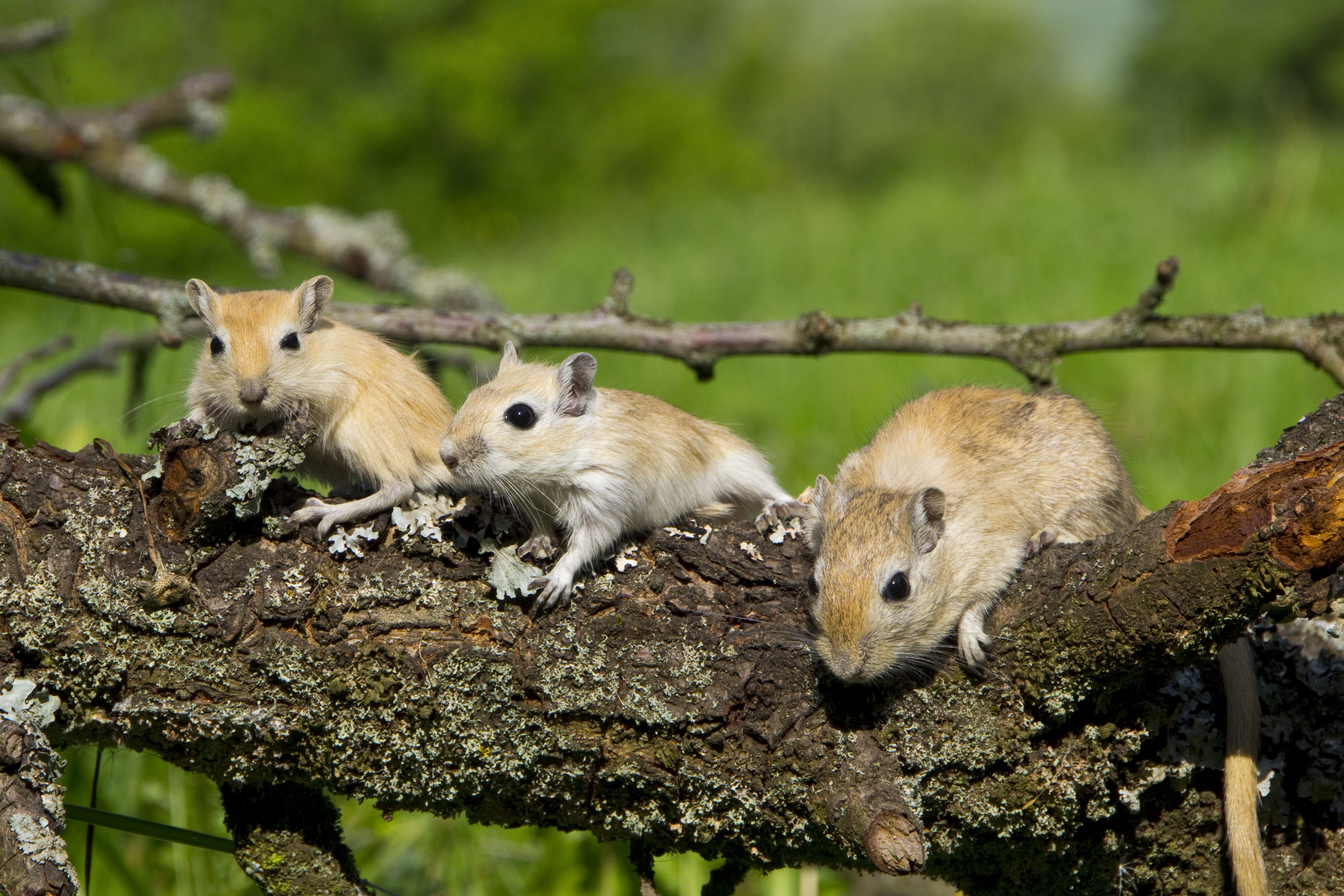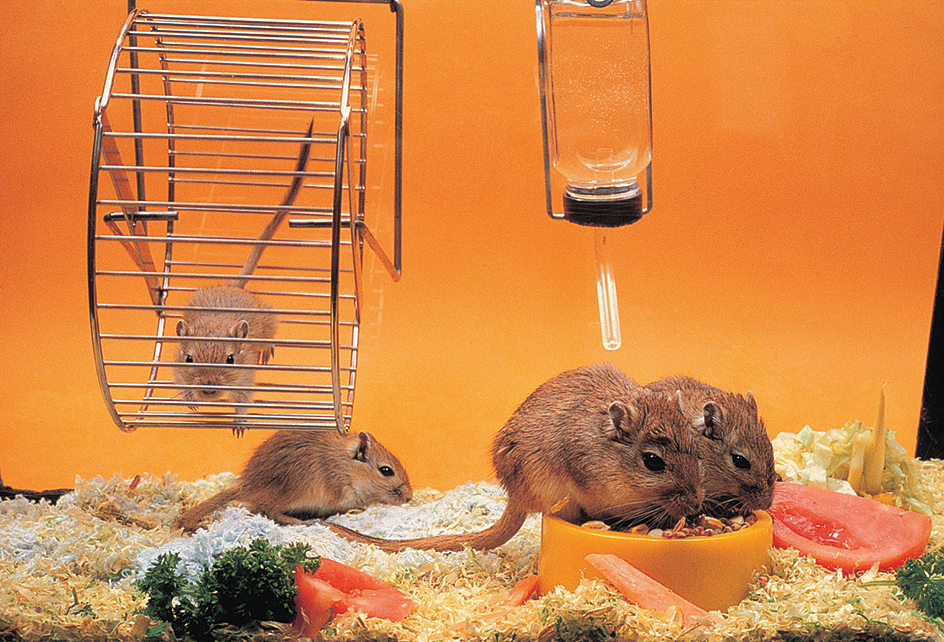Gerbil, << JUR buhl, >> is any of a group of furry, ratlike rodents, most of which have long hind legs and a long, hairy tail. There are about 100 species of gerbils, and they live in dry regions of Africa and Asia. The Mongolian gerbil, also called the Mongolian jird, is the best-known type. Its curiosity, gentle nature, and interesting behavior make it a popular pet. It is also used for many types of medical and other scientific research.


The Mongolian gerbil weighs about 3 ounces (85 grams) and measures about 8 inches (20 centimeters) long, including its tail. The tail has a tuft of black hair at the tip. The animal usually walks on all four legs, but it occasionally hops like a kangaroo, using only its hind legs. Its color ranges from yellowish to grayish or brownish. The underparts of the Mongolian gerbil are white, dull yellow, or pale gray. The feet have strong, dark brown or black claws.
Wild Mongolian gerbils live in parts of China and Russia and throughout most of Mongolia. Groups of them form colonies and dig burrows for shelter. These gerbils are active day and night. They eat bulbs, leaves, roots, seeds, and stems.
Mongolian gerbils can breed when they are 10 to 12 weeks old. The female carries her young in her body for 24 to 26 days. She gives birth to an average of 4 or 5 young at a time but may have as many as 12.
Gerbils make good pets. They are clean, practically odorless, and easy to care for. Modern pet gerbils descended from gerbils captured in eastern Mongolia in 1935. In 1954, a Japanese laboratory sent 22 gerbils to the United States for use in scientific research. These animals became the ancestors of pet gerbils in the United States.
Pet Mongolian gerbils live up to four years or longer. Owners should feed them food pellets manufactured for pet rats or mice, or a mixture of fruits, small seeds, and raw vegetables.
